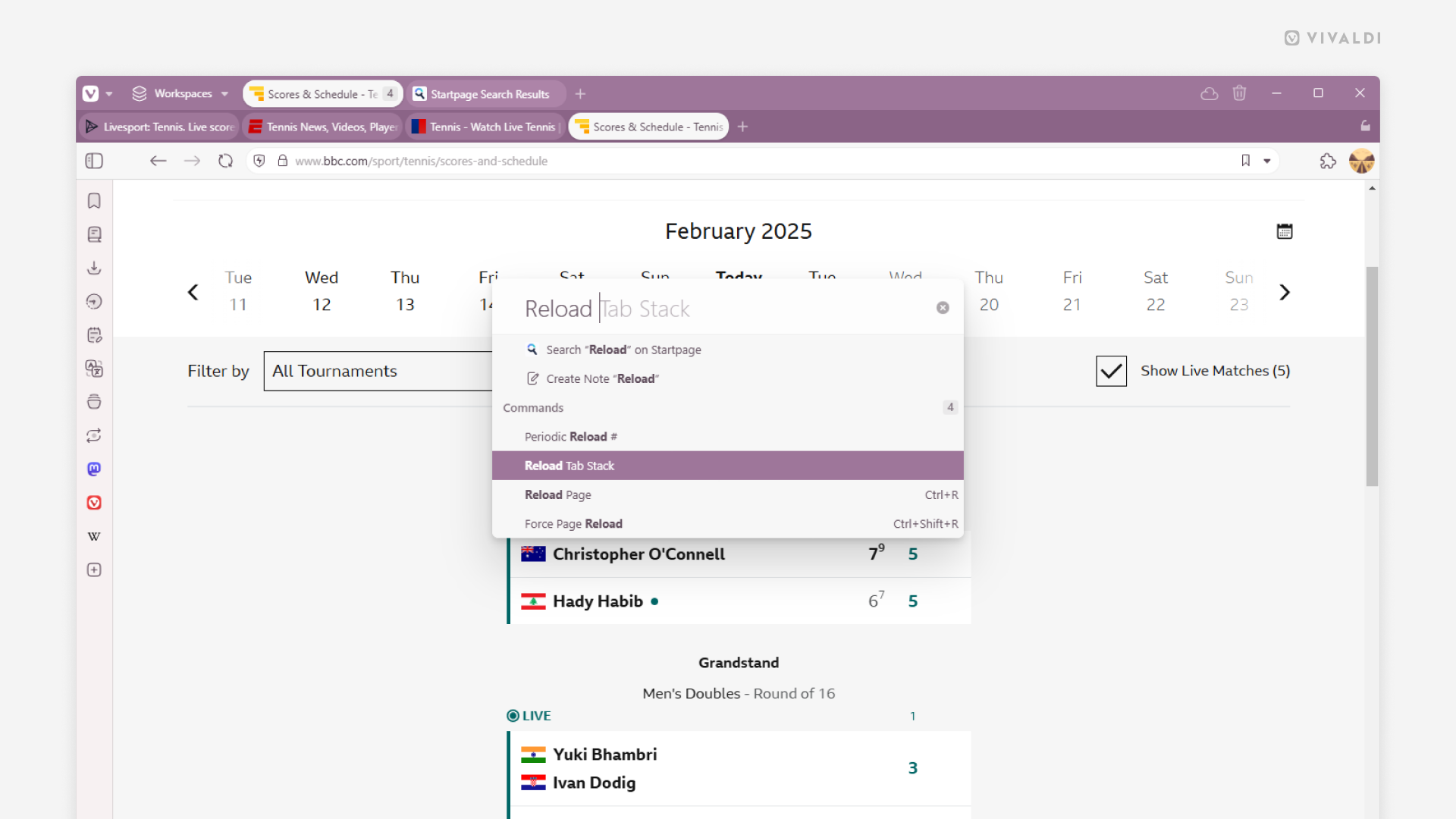Desktop Tips
Tip #673
March 18, 2025
Get your Mail accounts in the correct order.
Vivaldi Mail makes managing multiple mail accounts a joy. But not all accounts are equally important. You probably want your main accounts to be at the top of the Mail Panel‘s All Accounts list, while the less frequently used ones can take their place at the bottom.
To reorder mail accounts:
- Go to Settings > Mail > Mail Accounts.
- Select the account you want to move.
- Click on the up and down arrows below the list of accounts to move the selected account.
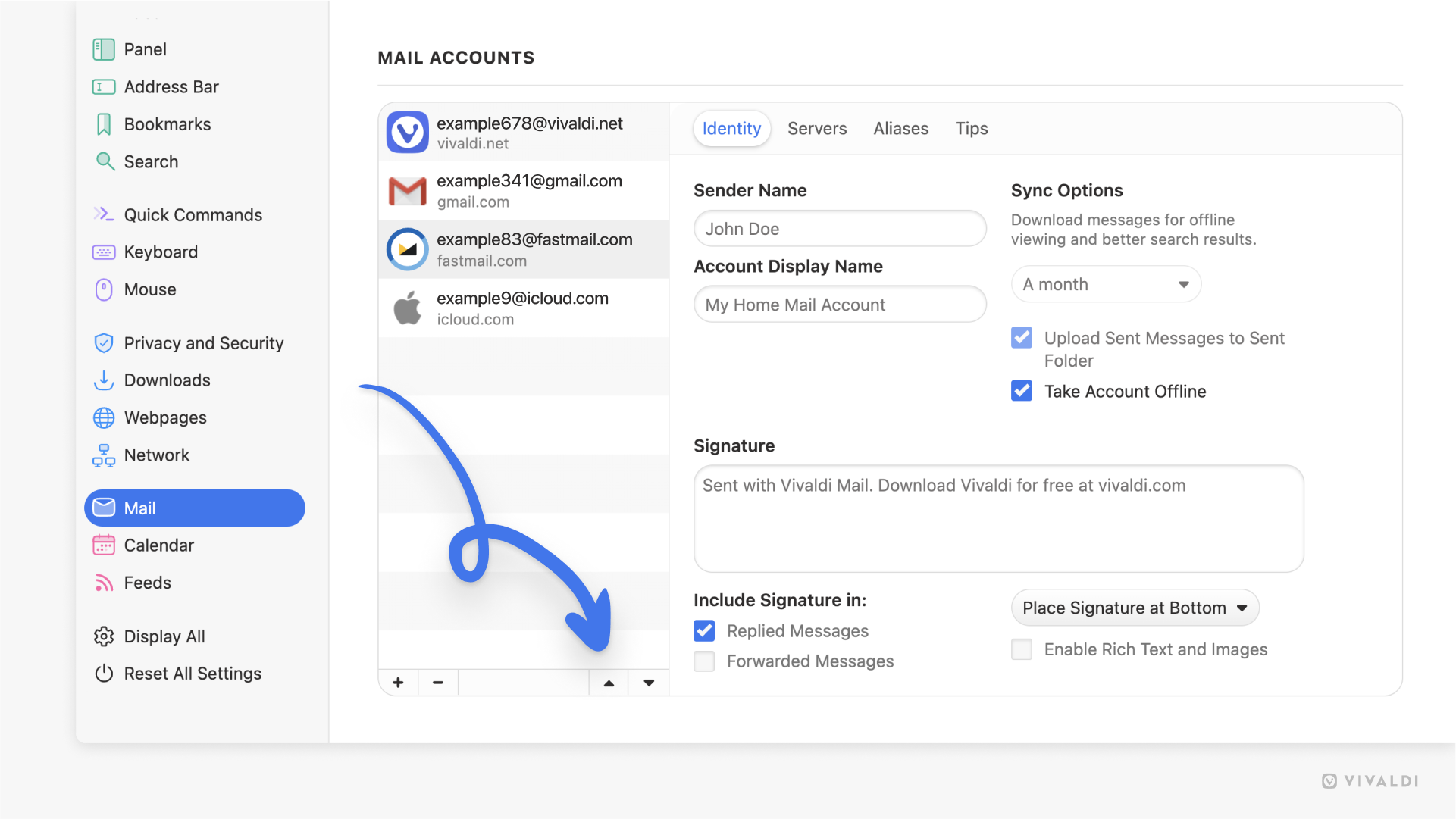
Tip #672
March 17, 2025
Make the date and time in Vivaldi match your preferred format.
Should the date be written as day-month-year or month-day-year? Does the week start with a Sunday or a Monday? In Vivaldi, you can decide how dates should be displayed in the browser.
To review date and time settings:
- Go to Settings > General > Language > Preferred Date & Time Format.
- Choose whether to follow your operating system’s settings or the browser’s language.
- Additionally, choose what day the week should start with and which week to count as the first one of the year.
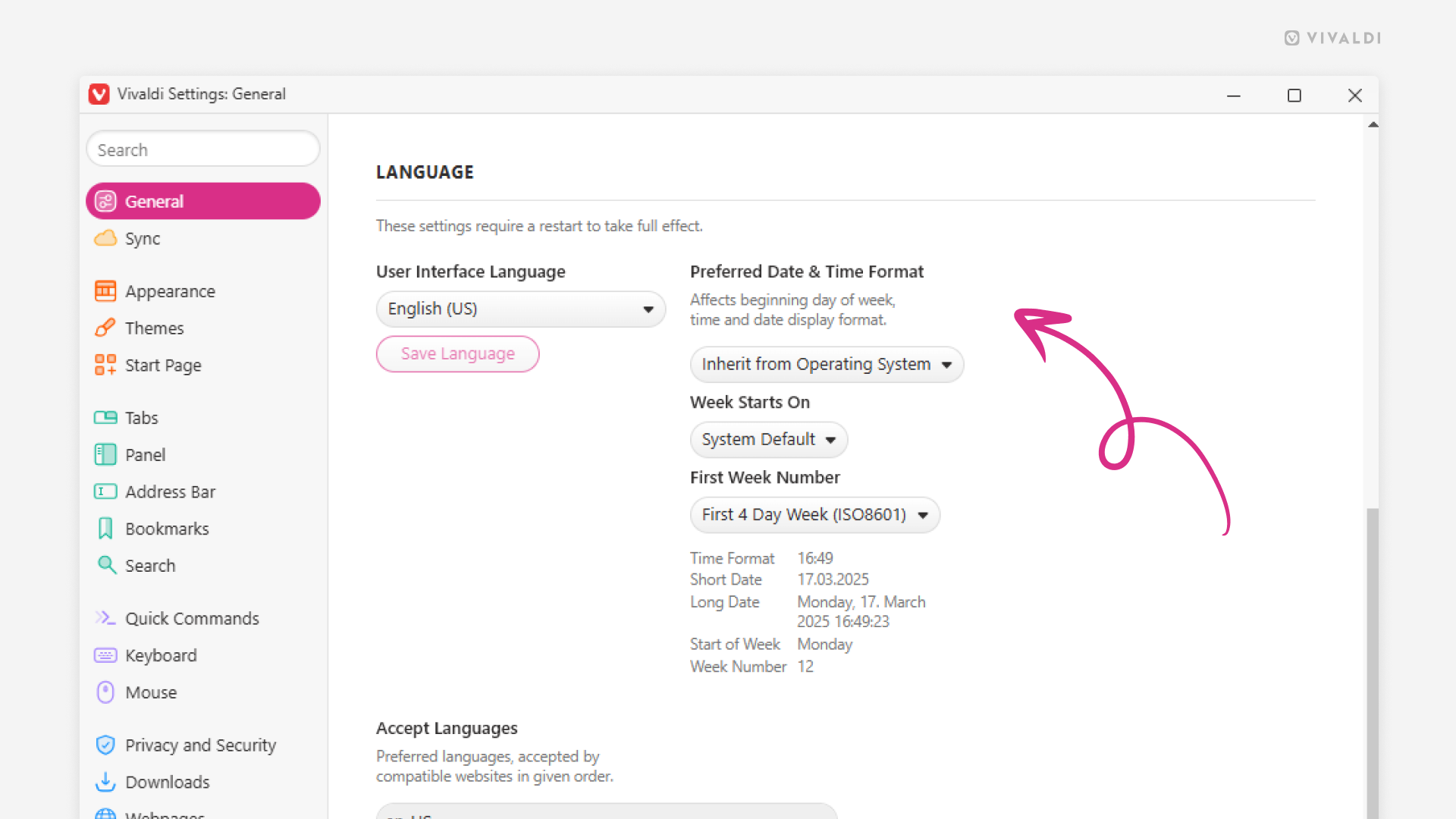
Tip #670
March 13, 2025
Declutter the Panels sidebar by hiding the Panels you don’t use.
Many of Vivaldi’s key features can be accessed from the Panels sidebar on the side of the browser window. Though we hope you find them all useful, there likely are some that you hardly ever use. If that’s the case, why not hide the panel buttons for a cleaner view allowing you to reach the Panels you do use faster?
To hide Panels:
- Locate an unused panel on the sidebar.
- Right-click on its button.
- Select “Remove from Toolbar”.
To bring a button back, go to the main Vivaldi menu > View > Customize Toolbar > Panel and drag the button back to the sidebar.
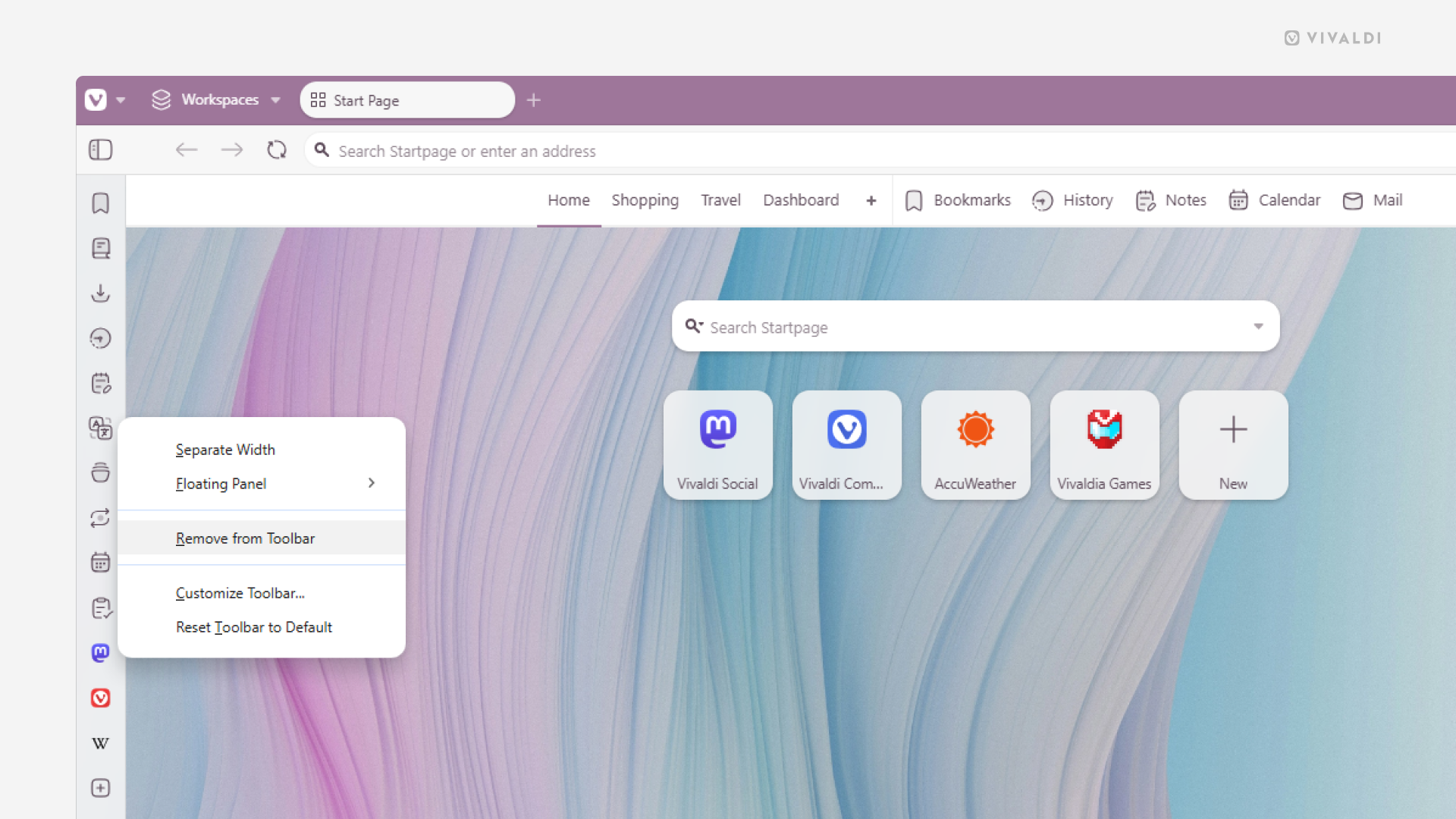
Tip #668
March 11, 2025
Make updating events in the Vivaldi Calendar a delight by enabling the correct settings.
Which is more important to you – event length or that it ends at the set time even when the start time changes? Whatever your preference, Vivaldi Calendar comes with a setting to cater to both needs.
To review the setting:
- Go to Settings > Calendar > Calendar Settings > Calendar Editing > Auto Adjust End Time.
- Choose between:
- Always, i.e. push the end time forward,
- Never, i.e. keep the same end time,
- Adjust the end time, except for all-day events.
Tip #666
March 7, 2025
Reorder tiled tabs for a more comfortable view.
In Vivaldi there’s no need to jump back and forth between tabs – Tab Tiling allows you to view several tabs at the same time in a split-screen view. Depending on your tab order and the layout of the web pages, the grid view might not work out of the box, so it’s necessary to adjust the view by resizing the tiles (see Tip #47) and by reordering the tabs in the tiled view.
To reorder tiled tabs:
- Click on a tab you want to move and hold down the mouse button.
- Drag the tab to a different location on the Tab Bar.
- Repeat with the other tiled tabs until all tiled tabs are where you want them.
Tip #663
March 4, 2025
Keep the Tab Bar only for tabs by moving or hiding the other buttons.
In Vivaldi, you can customize aspects you might have not even known could be customized, for example, on the Tab Bar.
To hide the Synced and Closed Tabs buttons:
- Go to Settings > Tabs > Tab Display > Tab Bar.
- Disable “Display Trash Can” and/or “Display Synced Tabs Button”.
Please note that to open tabs sent from other synced devices using the “Send to Device” feature you need to have the Synced Tabs button enabled.
To hide the Workspaces menu:
- Go to Settings > Tabs > Workspaces.
- Disable “Show Workspaces in the Tab Bar”.
When the Tab Bar buttons have been hidden, you can access your Workspaces, and Synced and Closed Tabs from the Windows Panel.
To move the menu and window control buttons (minimize, maximize, close):
- Go to Settings > Appearance > Menu > Menu Position.
- Select “Horizontal”.
This will move the menu and window control buttons to their own toolbar.
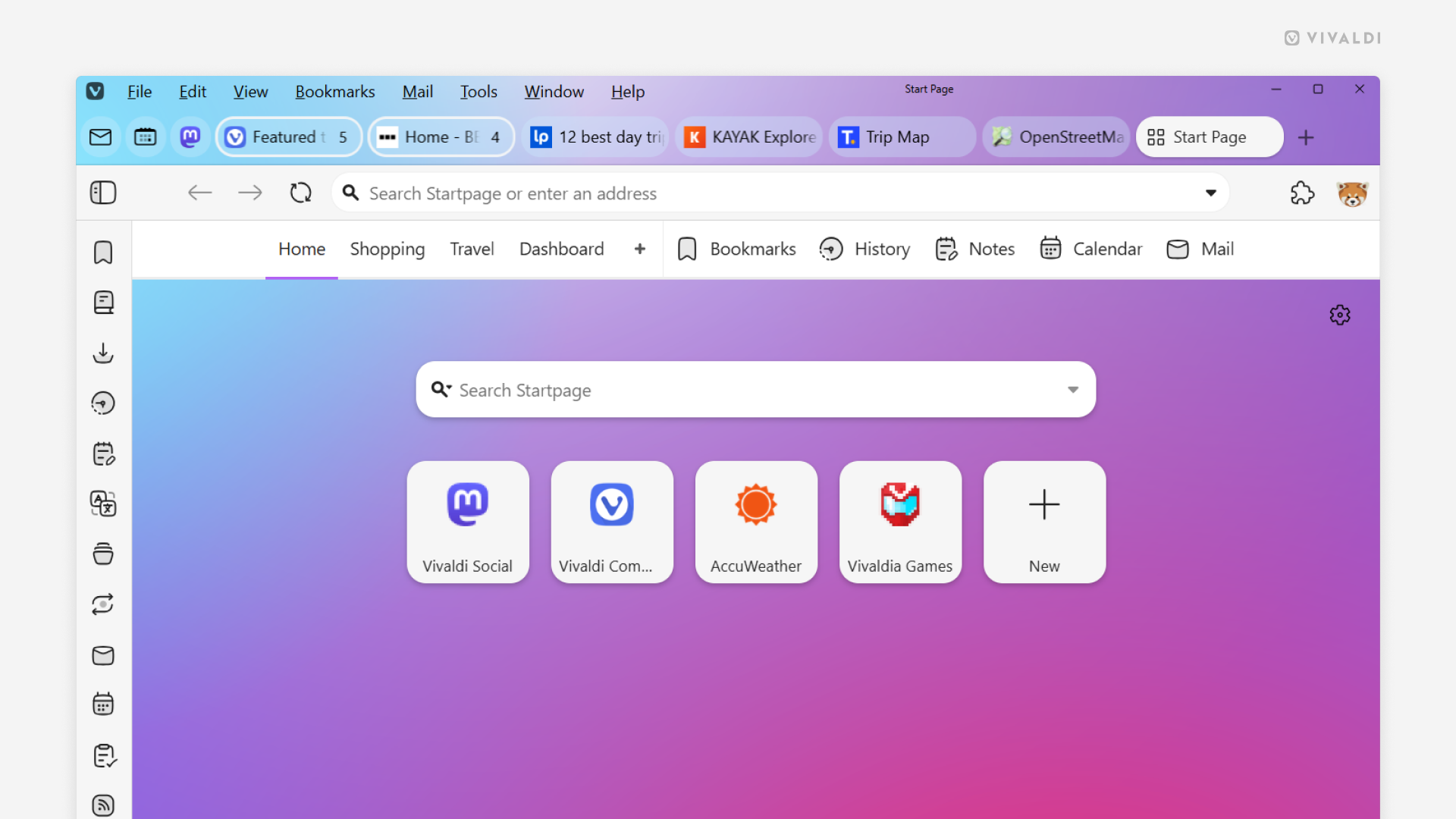
Tip #662
March 3, 2025
Create a Command Chain to copy the active tab’s link with a single shortcut.
If you’re a fan of using Vivaldi with your keyboard, you’re probably familiar with Ctrl/⌘ + L and Ctrl/⌘ + C shortcuts for copying the link of the web page you have open in the active tab. By using Command Chains, you can merge them into a single shortcut.
To create a chain for copying page links:
- Go to Settings > Quick Commands > Command Chains.
- Add a new chain with the following commands.
- Focus Address Field
- Delay (1000)
- Copy
- Go to Settings > Keyboard > Chains.
- Find your new chain and give it a new keyboard shortcut.
In addition, you can create a Mouse Gesture for the command, trigger it via Quick Commands, and add a button to the browser’s toolbars.
Tip #661
February 28, 2025
Get straight to your Start Page by disabling the Private Window Introduction.
When it’s your first time using a Private Window in Vivaldi, it’s good to be educated about what it actually entails. In Vivaldi, browsing in a Private Window means that searches, sites visited, cookies, and temporary files won’t be stored by Vivaldi. It does not encrypt or otherwise modify your connection.
That’s why you’ll see an introduction whenever you open a new Private Window. If you regularly browse in Private Windows, this information is already known to you. That’s why you can hide it and display your preferred New Tab Page, such as Speed Dials or the Dashboard instead.
To hide the introduction:
Option 1
- Open a new Private Window.
- Tick the box “Do Not Show Introduction Again”.
Option 2
- Go to Settings > Privacy and Security > Private Windows.
- Disable “Show Introduction”.
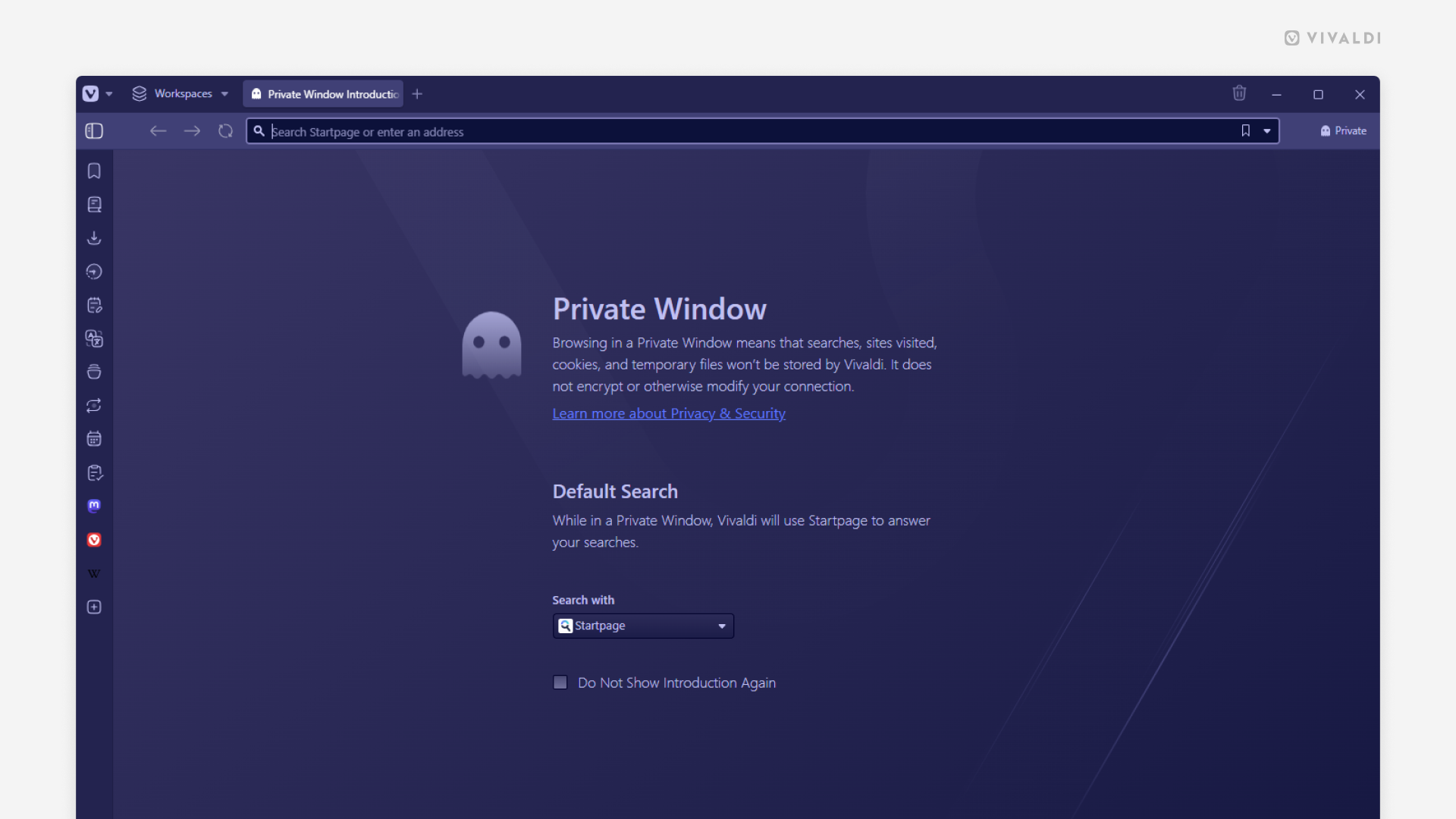
Tip #659
February 26, 2025
Start composing a new email with one click in the Contacts Panel.
By default, when you click on a contact in the Contacts Panel, it will open Vivaldi Mail with all mail correspondence between the two of you. If you’d rather start composing a new email message to them, there’s a quick setting change you need to do.
To change your preference:
- Go to Settings > Panel > Contacts Panel > Default Contact Action.
- Enable “Compose New Message” instead of “View All Mail Messages”.
In Contacts Panel settings you can also choose whether your preferred action should take place after a single or double-click. You can access the other option from the right-click context menu.
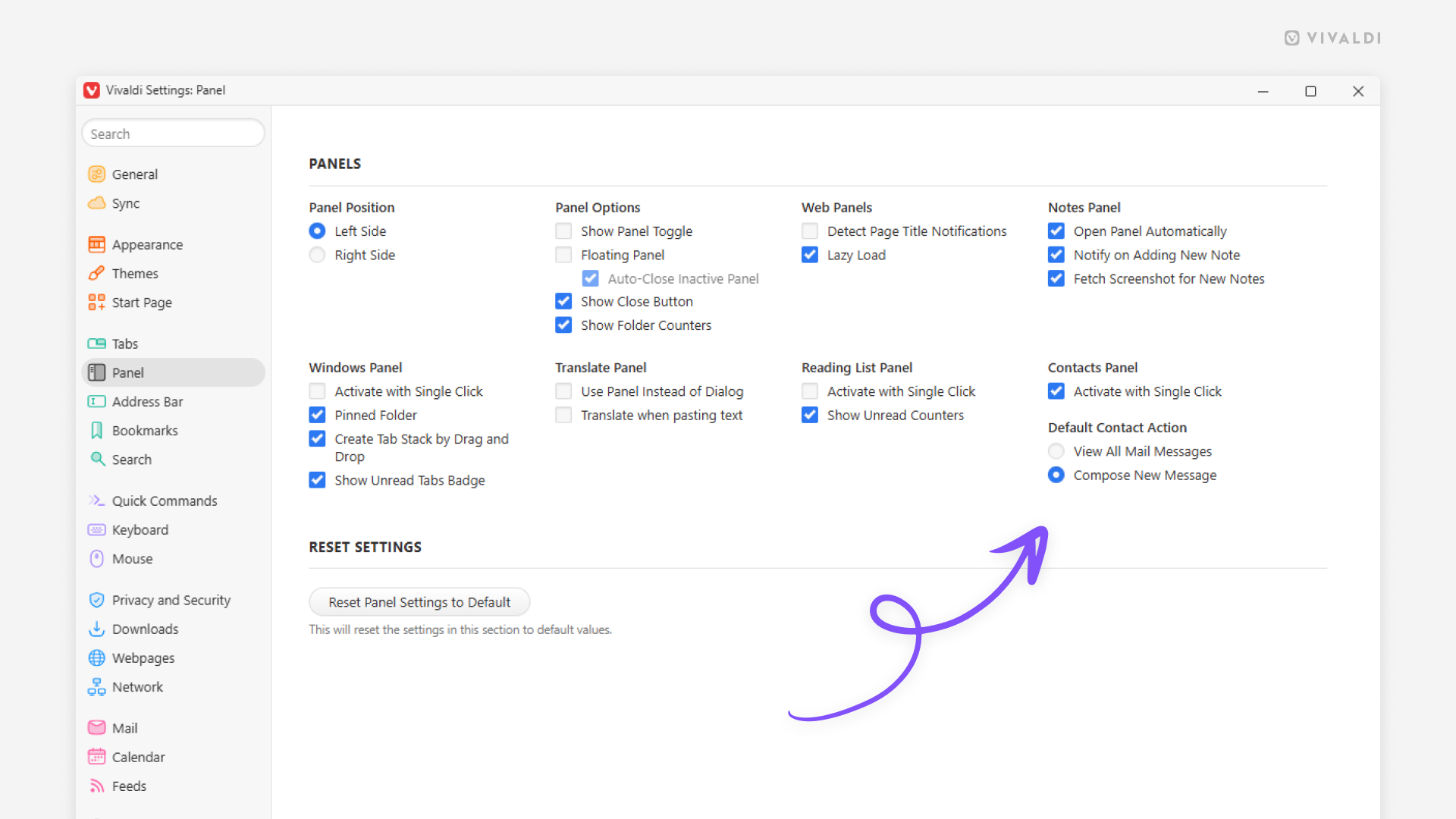
Tip #658
February 25, 2025
Open the Notes Panel automatically when creating a new note from text selection.
A good starting point for a new note is selecting a snippet of text on a web page and turning it into a note by right-clicking on the highlighted text and selecting “Copy to Note”. To edit and organize the new note further, you can make the Notes Panel open automatically to get to the note faster.
To make the Notes Panel open automatically:
- Go to Settings > Panel > Notes Panel.
- Enable “Open Panel Automatically”.
Tip #654
February 18, 2025
Open context menus with long clicks on the toolbar buttons.
Everyone knows that right-clicking on elements in the browser and on web pages opens a menu with a myriad of useful options. But there’s a lesser-known option in Vivaldi that works well on Vivaldi’s toolbar buttons and in Vivaldi Mail.
To open toolbar button context menus, simply click on the button with the left mouse button and hold it down until the menu opens. Then select the option you need.
Tip #653
February 17, 2025
Reload all tabs in a Tab Stack with one move.
Keep the page content in your Tab Stacks fresh by reloading them. To do it as efficiently as possible, discover the shortcuts available in Vivaldi that allow you to reload the whole stack in one go.
- Tab Bar / Windows Panel – Right-click on the Tab Stack and select “Reload Tab Stack”.
- Quick Commands – while focusing on one of the grouped tabs, open Quick Commands, type “Reload Tab Stack” to find the command, and press “Enter”.
- Keyboard Shortcut – Go to Settings > Keyboard > Tabs to assign a shortcut for the command and use the keyboard shortcut when focusing on one of the grouped tabs.
- Mouse Gesture – Go to Settings > Mouse > Gesture mapping to create a gesture for the command and use the mouse gesture when focusing on one of the grouped tabs.
- Command Chains + Custom Icons – Create a chain with just one command in Settings > Quick Commands > Command Chains and add its button to your preferred toolbar from the Vivaldi menu > View > Customize Toolbar.
